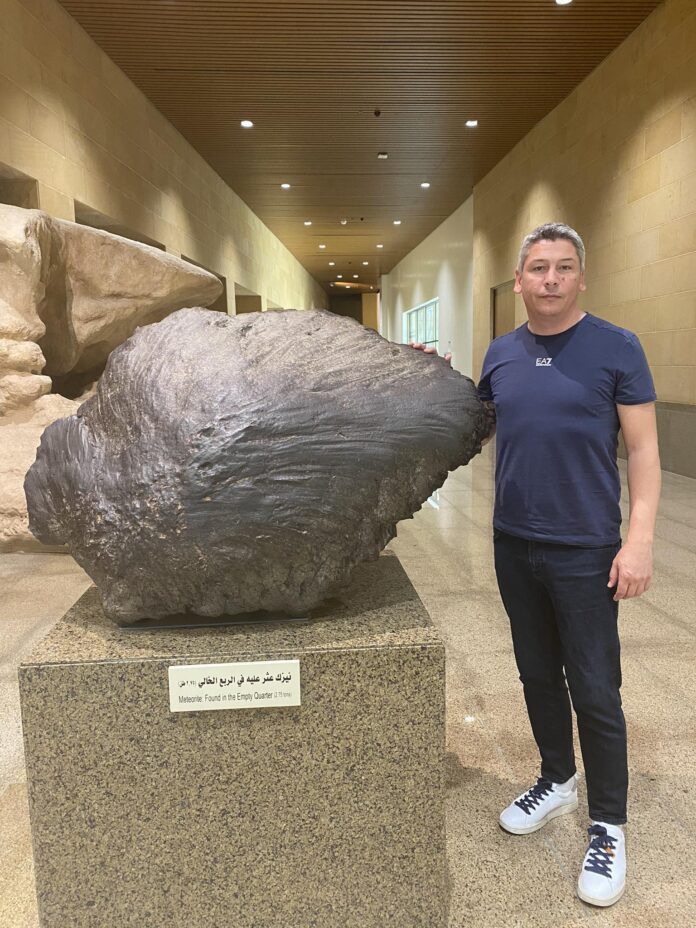
Ruslan Yordanov, a Bulgarian traveller and blogger, informed through his social media account that a meteorite weighing 3.5 tons is exhibited at the National Museum of Saudi Arabia.
It was discovered by the British explorer John Filby in 1932. , after the Bedouins give him small pieces of rocks, which he understands are not from the earth.
According to studies conducted by Abdulaziz bin Laaboun, a geology professor at King Saud University, it is estimated that Wobar, the name of the meteorite, struck the earth nearly 400 years ago.
From the Earth to the Moon and from prehistoric eras to modern eras, the corridors of the National Museum of Saudi Arabia will take the visitor on an adventure that transcends time and space.
One can witness artistic and historical evidence in the heart of Riyadh in the Al Muraba neighbourhood – near King Abdulaziz’s palace. The museum spans an area of 17,000 km2, telling the story of 3700 artefacts such as statues, inscriptions and unique sculptures. All information, besides Arabic, is also presented in English.
The museum has eight history-filled galleries, starting with the Man and the Universe gallery. The visitor can learn about the origins of the universe and solar system and the natural factors that have contributed to its development over millions of years.
In the Arab Kingdom gallery, one can feel immersed in civilizations that have existed since the 4th millennium BC and until the 2nd century AD well. “Before the Islamic Age” – here, one can see models of cities and markets and get acquainted with the evolution of writing and calligraphy.
“Islam and the Arabian Peninsula. ” – the gallery tells about the time dedicated to the birth of Islam Medina and the story of the rise and decline of the caliphate. Part of the exhibition illustrates the time from the Ottomans and Mamlots to the first Saudi state.
“The Prophet’s Mission” – the entire exhibition is dedicated to the life and work of Prophet Muhammad. The central wall is decorated with a vast family tree canvas, depicting the Prophet’s family down to the smallest detail.
“First and Second Saudi State” – this exhibition is dedicated to the history of the two early Saudi countries. Interestingly, the detailed model from the city of Diria can be seen right on the glass floor.
“Association” – the gallery is dedicated to the King of Saudi Arabia, Abdul Aziz. Here you will learn his biography and the history of his administration.
“Hajj and Two Holy Mosques” – this exposition describes the history of the significant Islamists. The central exhibits of the exhibition are the models of Mecca and its surroundings – the handwritten Quran.
